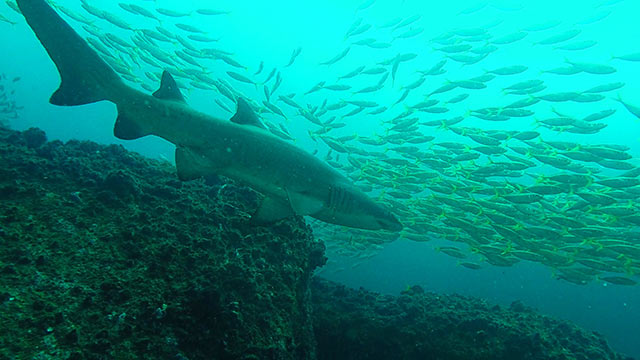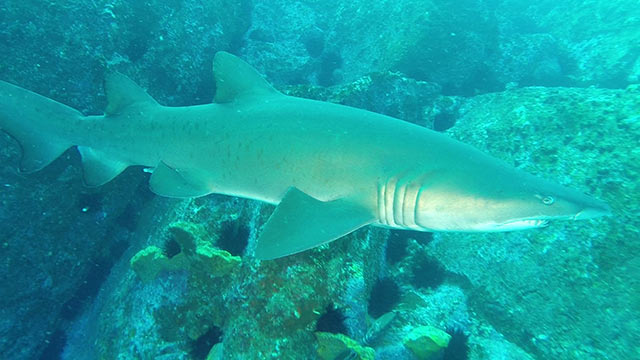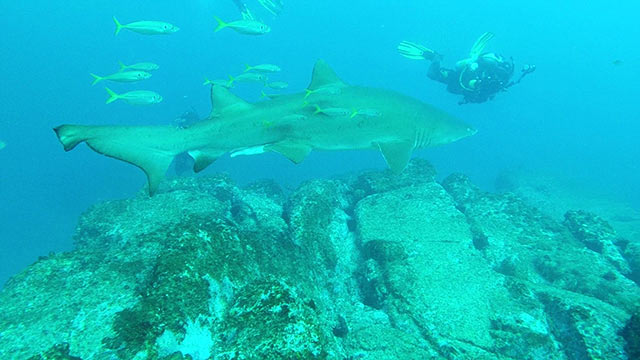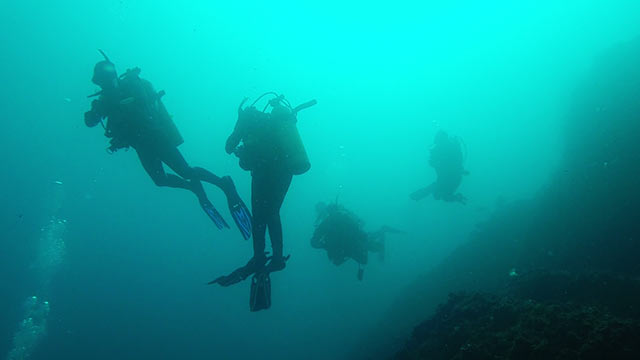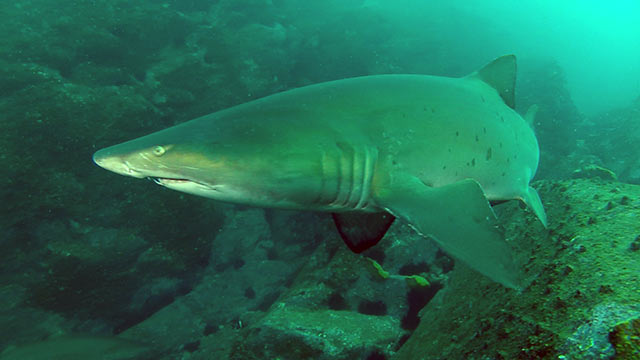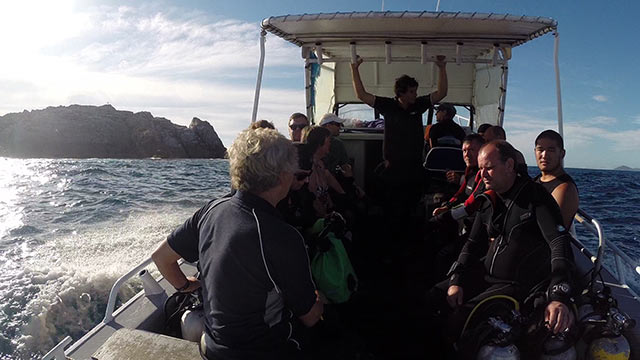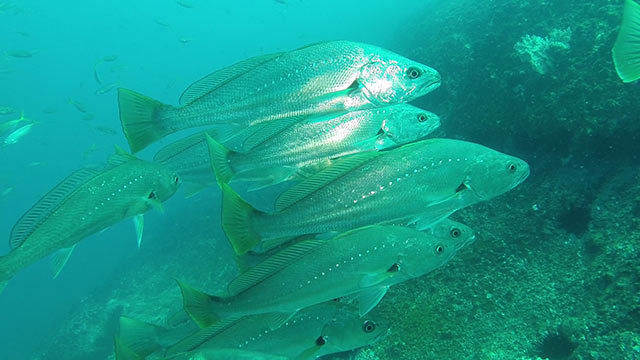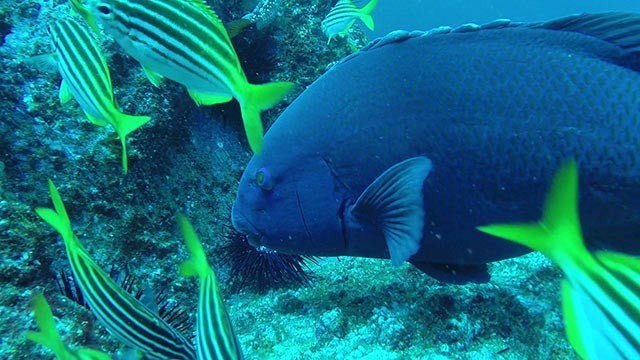Sharks are in the spotlight as the Western Australia government pushes ahead with their controversial shark cull. The plan to kill sharks bigger than three metres has drawn protests from marine-wildlife experts and campaigners. Knowing that, would you go scuba diving with sharks?
It’s true that sharks have been responsible for fatal attacks around the country. Last November, two men were killed days apart in shark attacks on opposite sides of the country. But is this really a reason to shoot sharks? After all, sharks existed in the oceans before humans inhabited the continents.
There are many Australians who believe the policy will not make the beaches safer. Some believe it may attract more sharks closer to the shore.
There are also many people who believe public money could be better spent on shark research, tagging, deterrents and eco-friendly nets. And some will go to great expense and time to protect sharks.
About 180 of the 400 species of sharks that live in our planet’s oceans can be found in Australian waters. Most sharks lurk deep in the ocean on the continental slope or shelf but many are also found in coastal waters and a small number in rivers and estuaries.
In Australia, most sharks can be legally caught by commercial and recreational fishers.
However, due to declines in numbers, a handful of species are now listed as ‘threatened’ and two types of sharks are “critically endangered”.
They are the Grey Nurse shark (Carcharias taurus) and the Speartooth shark (Glyphis glyphis).
Scuba diving with sharks
Sunshine Coast teacher of marine sciences, PADI Scuba Diving Instructor and AWARE shark specialist, Tony Isaacson is one volunteer who has a soft spot for sharks. So passionate is Tony about sharks, he spends hours helping Reef Check Australia with the Grey Nurse Shark Watch programme. Isaacson regularly goes scuba diving with sharks and things nothing of it.
Reef Check Australia is a not-for-profit environmental organisation that aims to protect reefs and oceans by engaging Australians in hands-on reef monitoring, education and conservation.
The Grey Nurse Shark Watch programme is a photographic identification monitoring program designed to capture data on grey nurse shark numbers, movements and distribution during different stages of their life cycle in NSW and QLD. Individual grey nurse sharks are identified by their unique spot patterns.
The Australian east coast population of the grey nurse shark is listed as Critically Endangered under the International Union for the Conservation of Nature’s Red List of Threatened Species.
As a volunteer, Isaacson is required to record the number of sharks, size, sex and fishing hardware.
“The purpose of the surveys is to try and understand the northward and southward movements of the breeding population between Wolf Rock in the north and Batemans Bay and points further south,” says Isaacson.
This year, he has already done 10 dives, which he funds himself (two dives cost between $120 and $170) and expects to do another 10.
“I’m dedicated to sharks because the Grey Nurse are in trouble and globally sharks are in serious decline. Someone has to wave the flag,” says Isaacson.
His recent dive was at Fish Rock Cave, located just over two kilometres off Smoky Cape at South West Rocks on the New South Wales Mid North Coast.
Fish Rock Cave is regarded as one of Australia’s top dive sites for its 125m cave, which has a double chimney, delightful mix of tropical and temperate marine species (think blue groper, anemone fish, marine turtles) and its abundance of Grey Nurse sharks.
Isaacson has dived Fish Rock Cave about 20 times and each dive has been different. His best experience was when south easterly winds had blown in clean oceanic water from the Tasman Sea and visibility was 30m.
“There was a distinct line of dirty coastal water that whales migrating back from Harvey Bay were using as a navigation aid. And it was amazing to see sharks, humpback whales, thousands of fish and turtles on one dive,” says Isaacson.
Tony Isaacson’s top five diving spots in Australia are:
1.The Ribbon Reefs, Tropical North Queensland
Extending along the edge of the continental shelf in the northern part of the Great Barrier Reef, from Cooktown to eastern Torres Strait, this is the frontier of the Great Barrier Reef.
The reef is colourful and the water is clean and clear. The reef edge ecosystems and open oceans are a treasure trove of pelagic species, including sharks and other oceanic species that rely on plankton.
2.Yongala Wreck, Townsville
The S.S. Yongala, which sank in 1911 is one of Australia’s intriguing maritime mysteries. 30 minutes from shore, the wreck is an a magnet for marine life such as giant gropers, schools of giant trevally and sea snakes.
3.Ex-HMAS Brisbane Conservation Park, Mooloolaba
Nine kilometres offshore from Mooloolaba, the former warship now in 28m of water is developing into a complex ecosystem. The dive site is a blend of tropical and sub-tropical species. “It’s an island in an ocean of sand, plonked in the marine equivalent of the Sahara,” says Isaacson.
4.Lady Elliot Island
An isolated coral cay at the southern extreme of the Great Barrier Reef, Lady Elliot Island is a marine life magnet and particularly notable for turtles that seek out tourists to have their backs scratched. It’s also the place to spot manta rays.
5.North Coast of Kangaroo Island
Kangaroo Island’s north coast has clear temperate water and unique marine life such as leafy sea dragons, which are endemic to Australia’s southern coastline. The region is also a kaleidoscope of bright blues, yellows and iridescent greens of sponges, sea squirts, soft and hard corals.
Plan Your Trip

Rent A Car – Find the best car rental rates at Discover Cars. They compare car hire companies to provide you with the best deal right now.

Find A Hotel – If you’re curious about this article and are looking for somewhere to stay, take a look at these amazing hotels.
